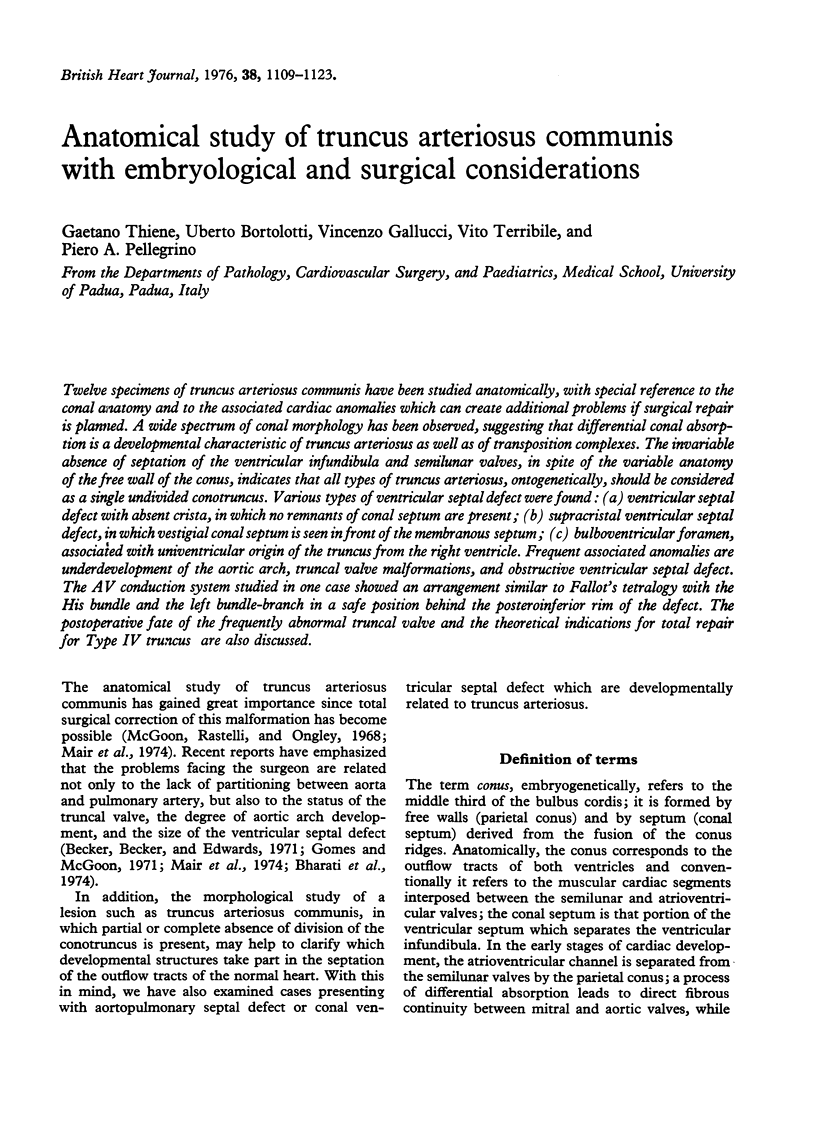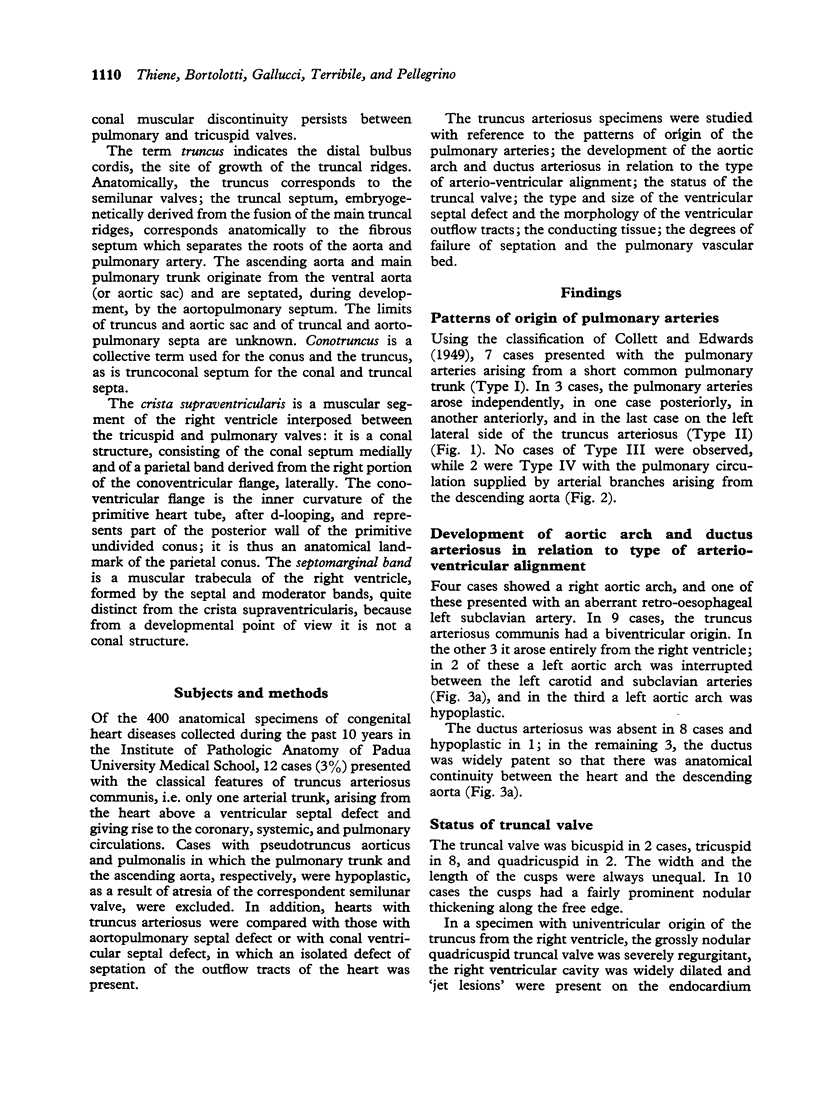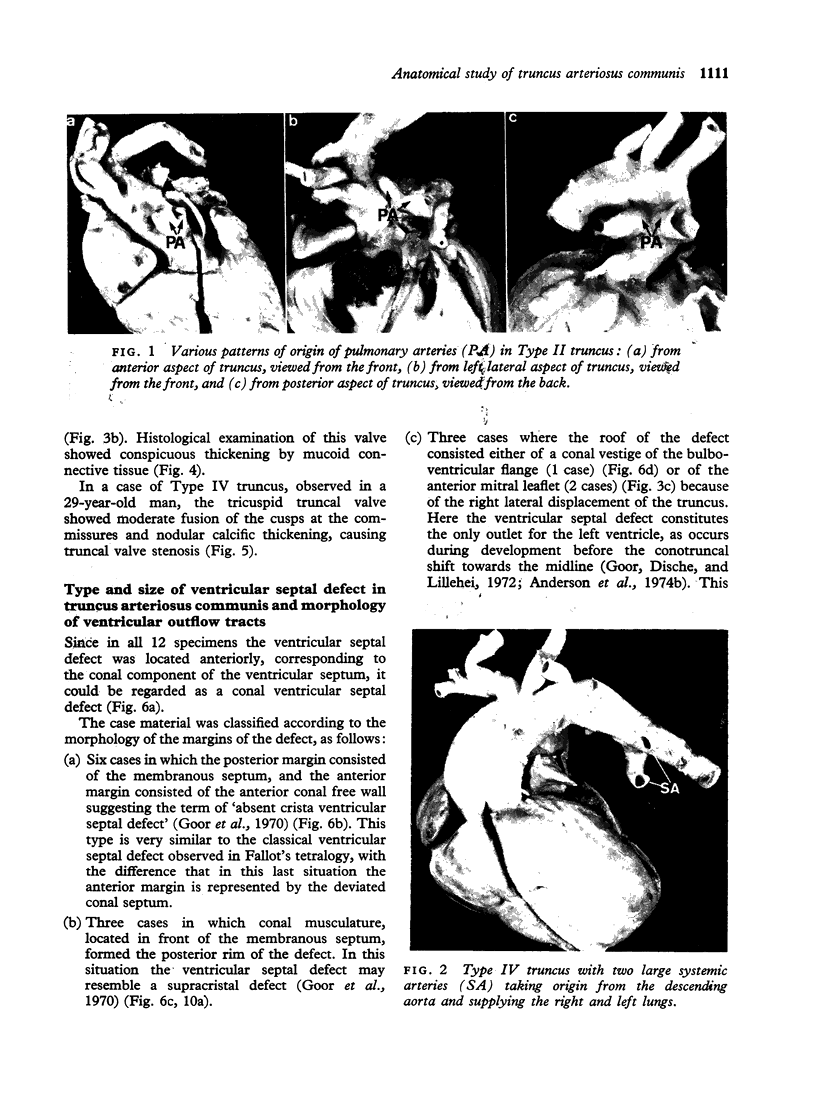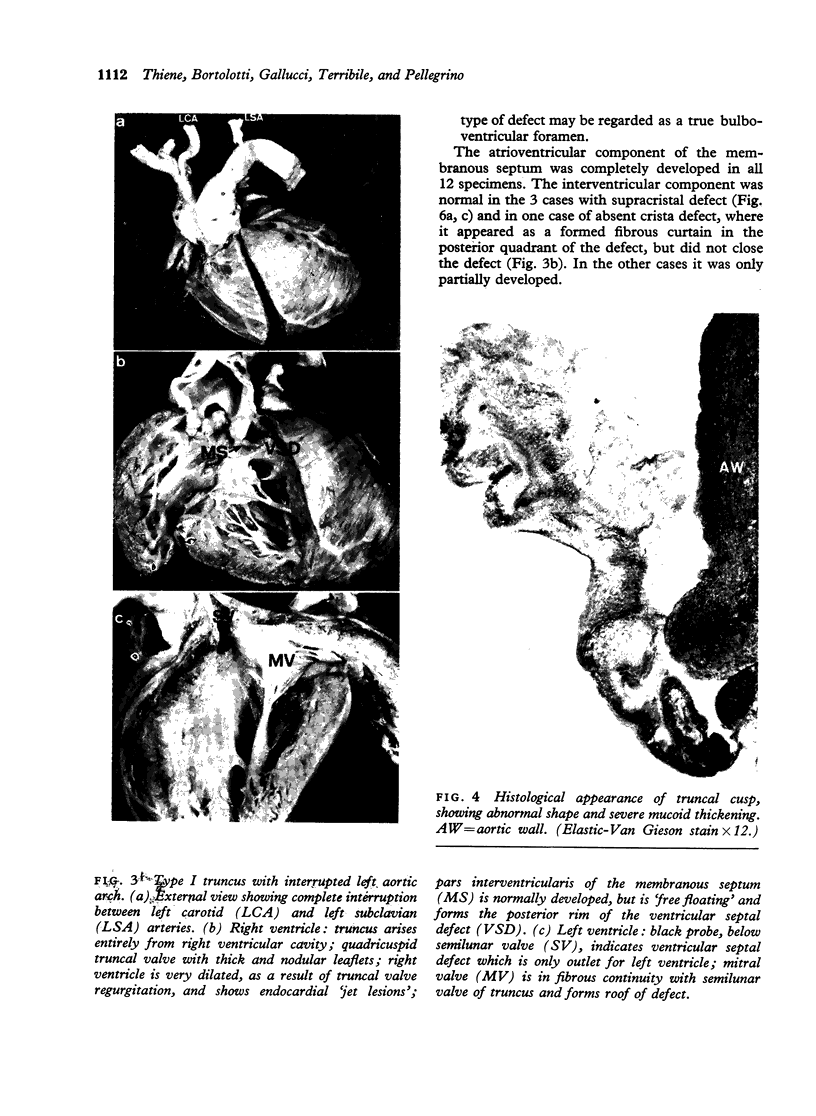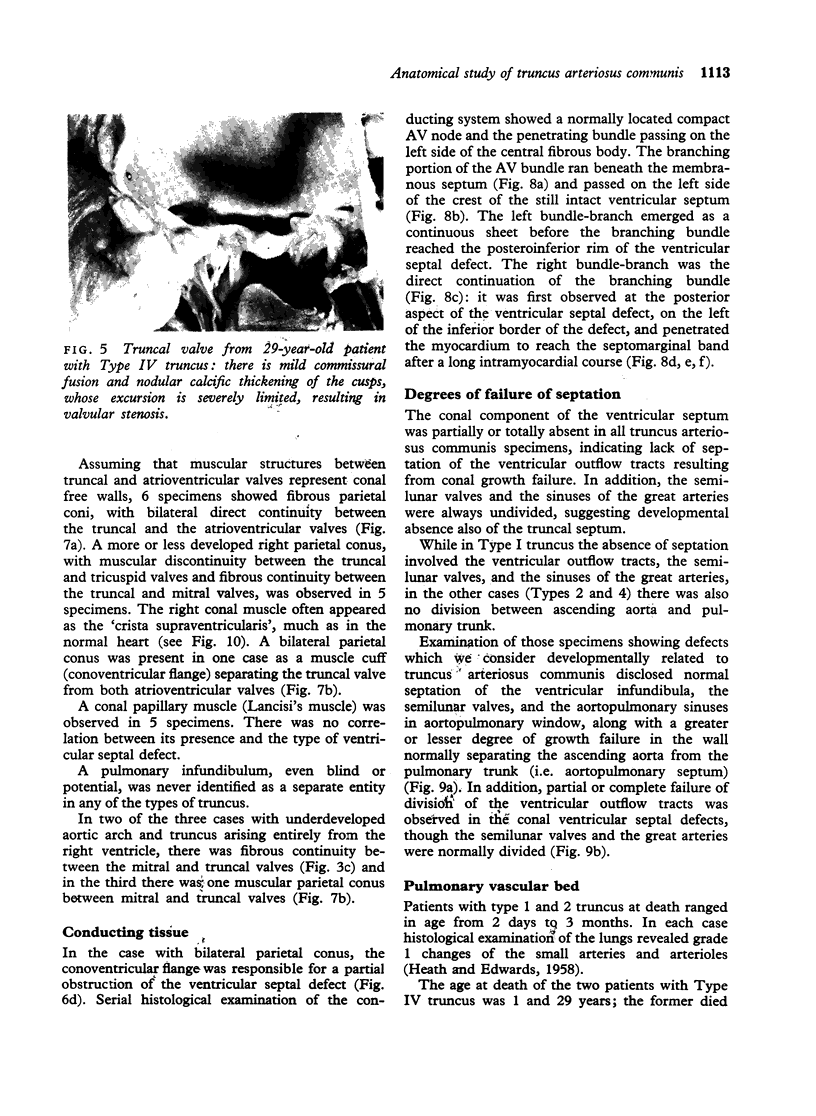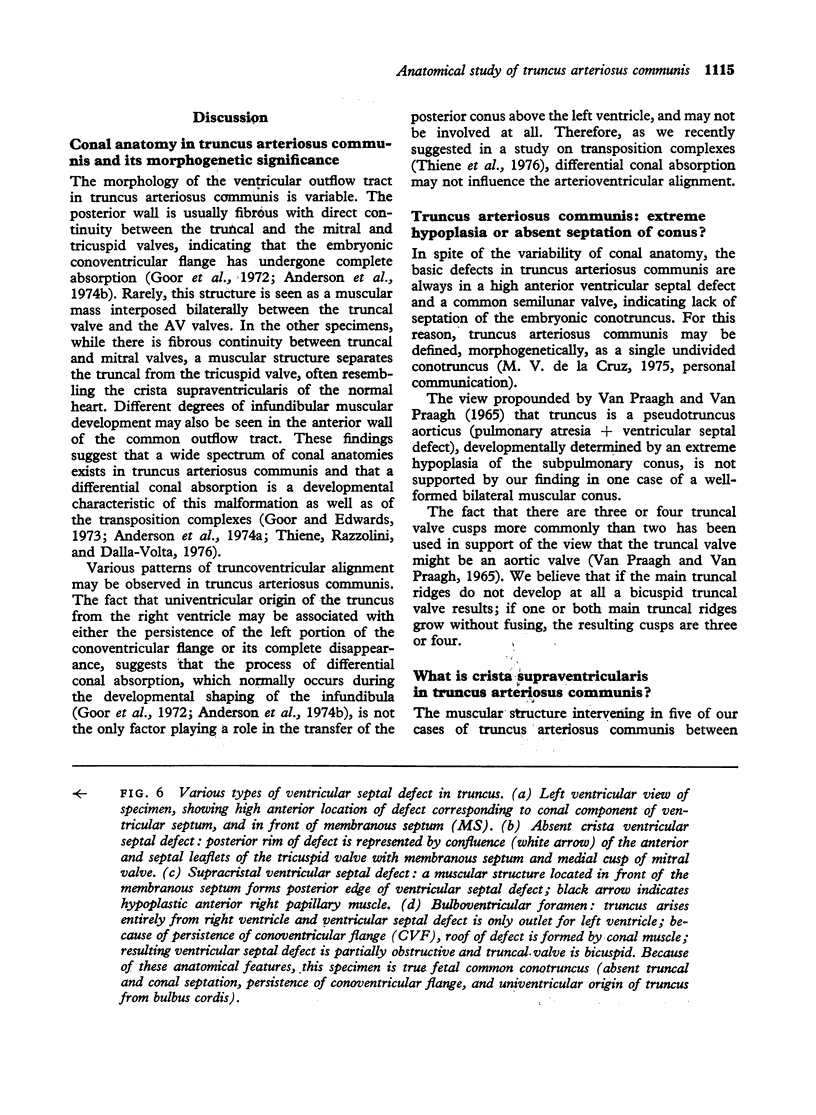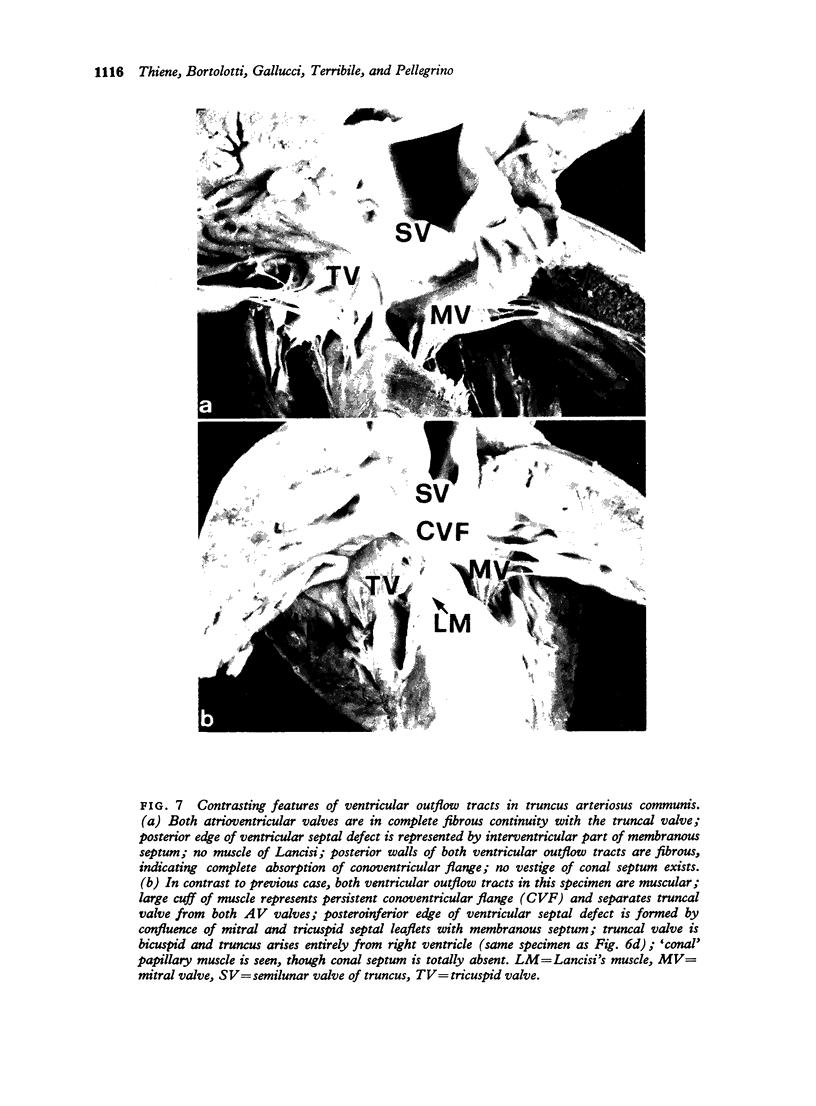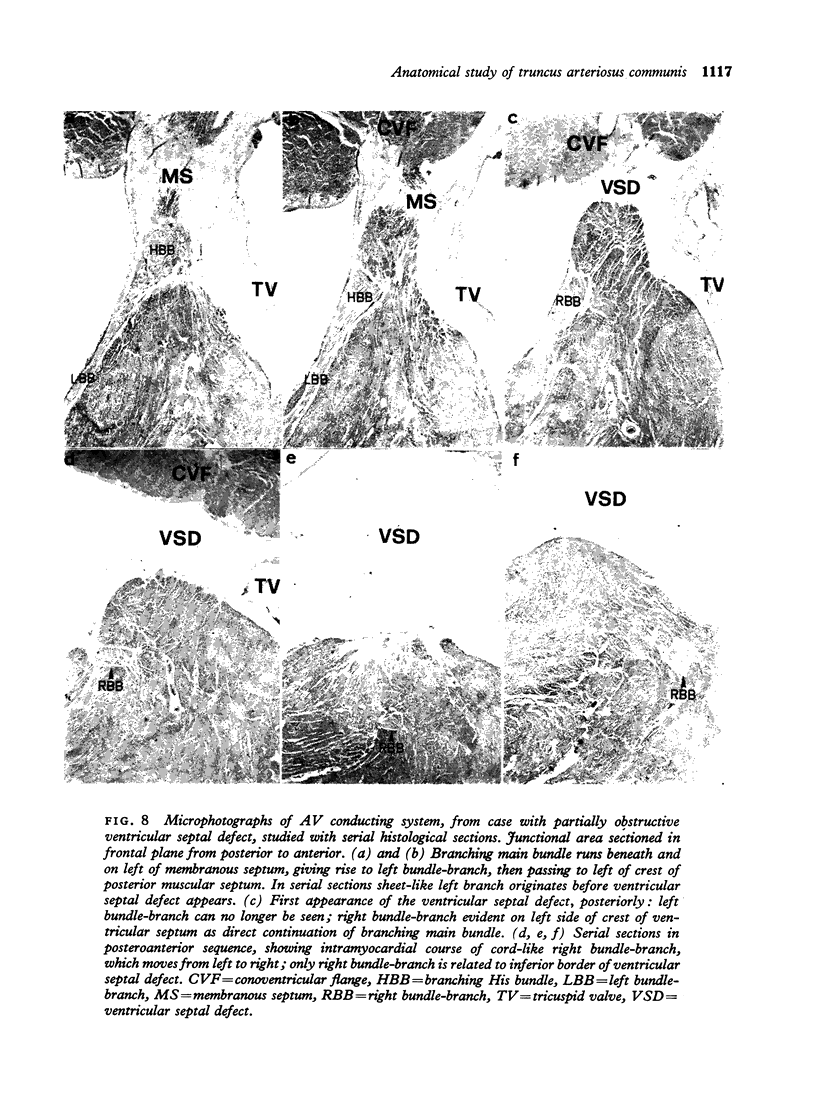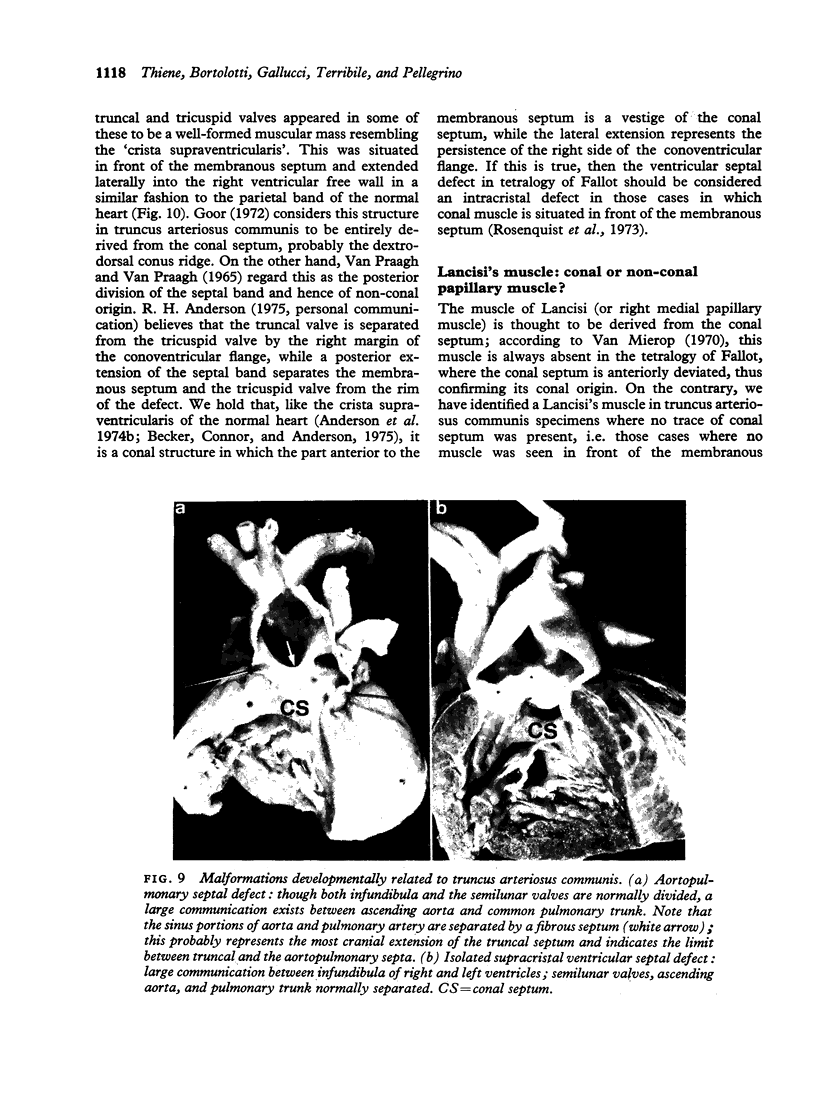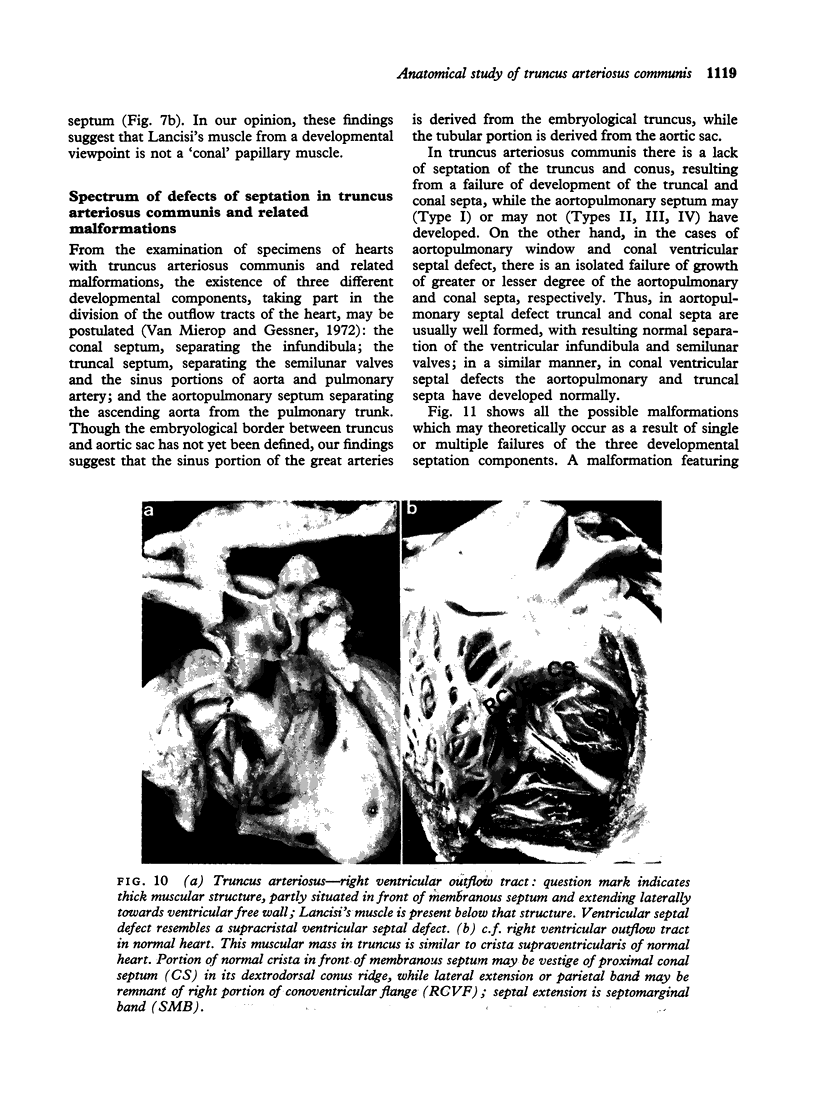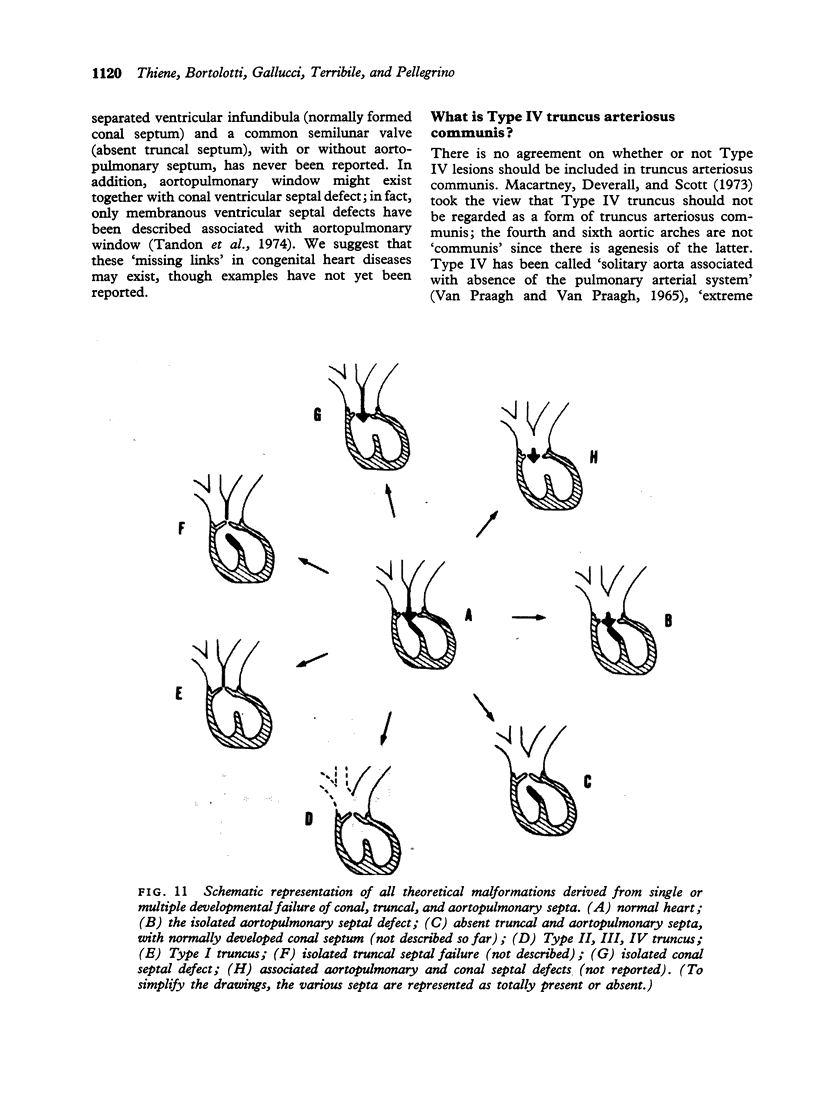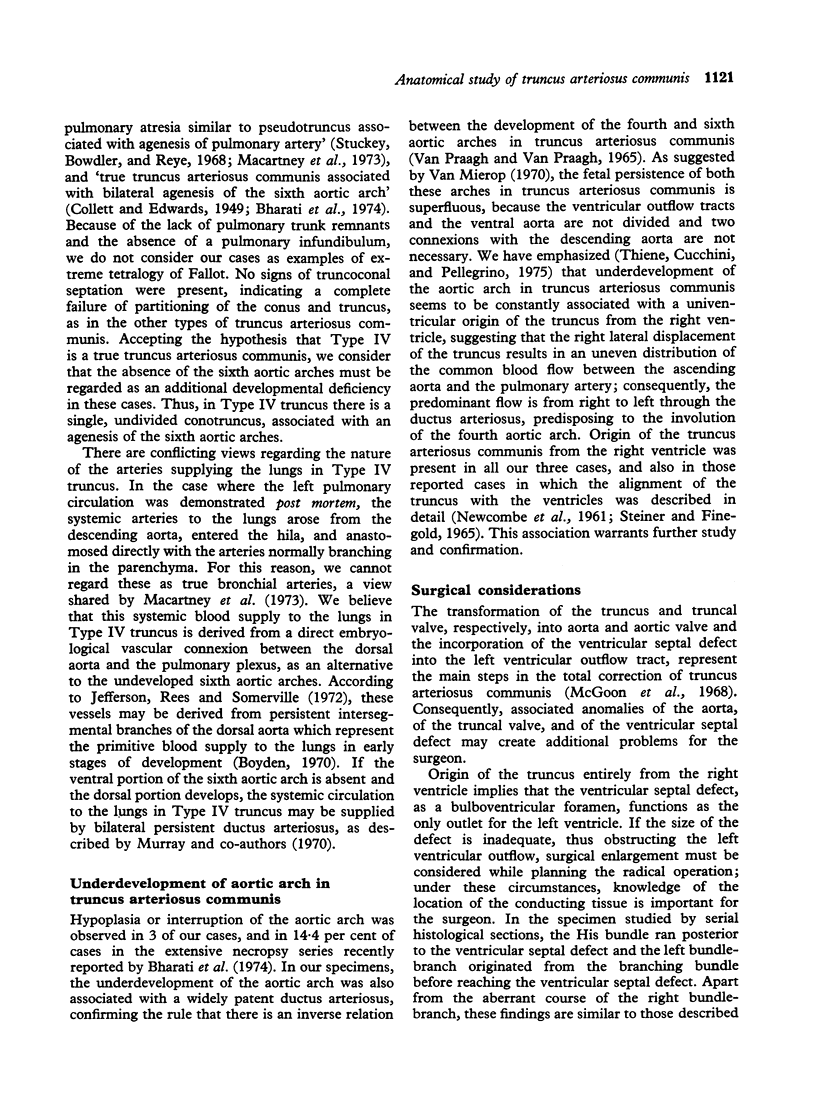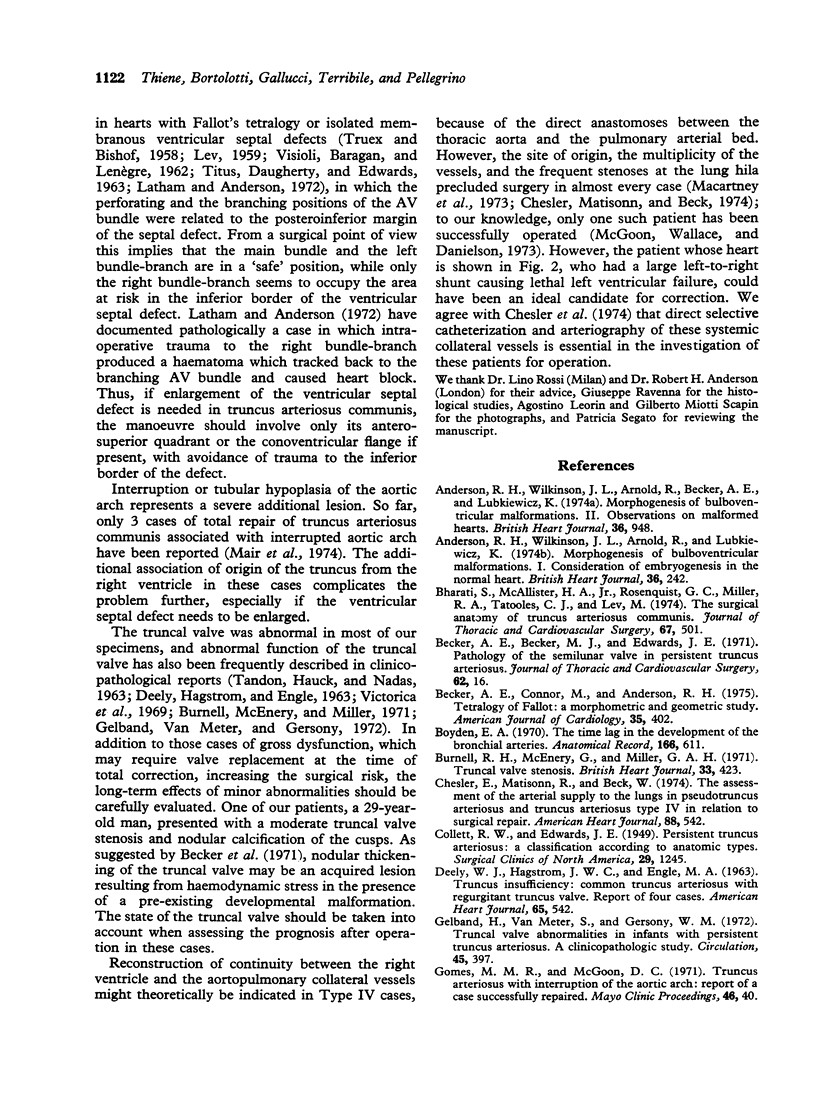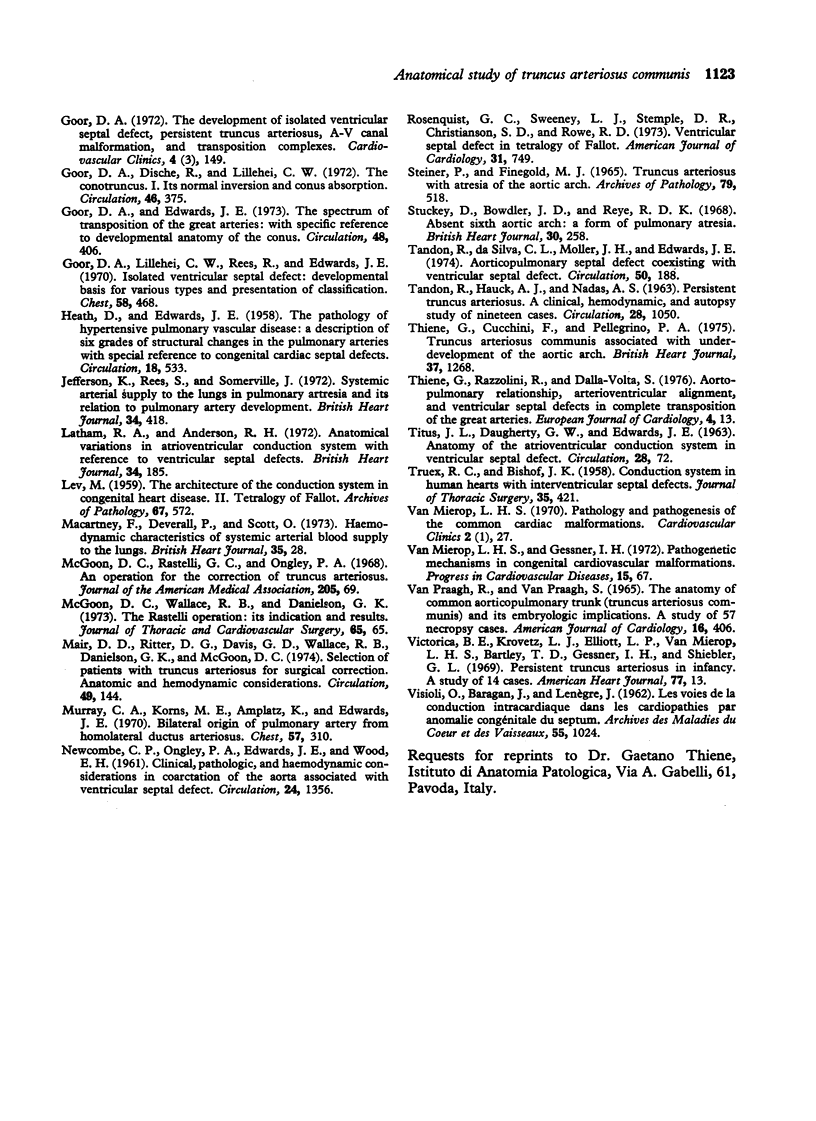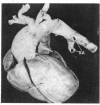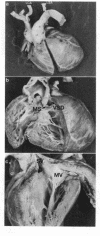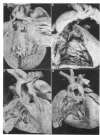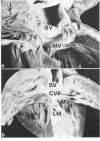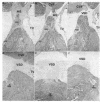Abstract
Twelve specimens of truncus arteriosus communis have been studied anatomically, with special reference to the conal anatomy and to the associated cardiac anomalies which can create additional problems if surgical repair is planned. A wide spectrum of conal morphology has been observed, suggesting that differential conal absorption is a developmental characteristic of truncus arteriousus as well as of transposition complexes. The invariable absence of septation of the ventricular infundibula and semilunar valves, in spite of the variable anatomy of the free wall of the conus, indicates that all types of truncus arteriosus, ontogenetically, should be considered as a single undivided conotruncus. Various types of ventircular septal defect were found: (a) ventricular septal defect with absent crista, in which no remnants of conal septum are present; (b) supracristal ventricular septal defect, in which vestigial conal septum is seen in front of the membranous septum; (c) bulloventricular foramen, associated with univentricular origin of the truncus from the right ventricle. Frequent associated anomalies are underdevelopment of the aortic arch, truncal valve malformations, and obstructive ventricular septal defect. The AV conduction system studied in one case showed an arrangement similar to Fallot's tetralogy with the His bundle and the left bundle-branch in a safe position behind the posteroinferior rim of the defect. The postoperative fate of the frequently abnormal truncal valve and the theoretical indications for total repair for Type IV truncus are also discussed.
Full text
PDF